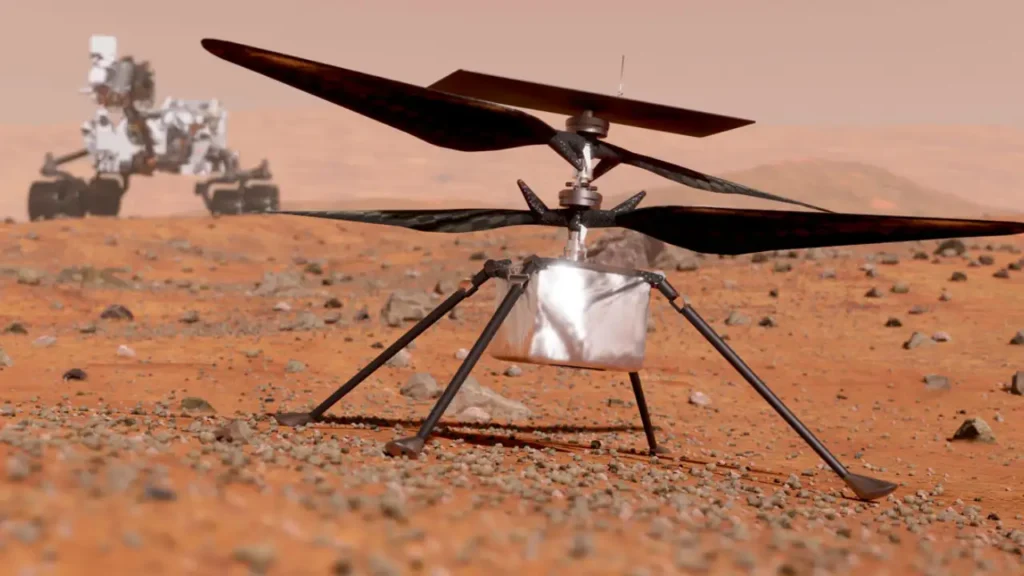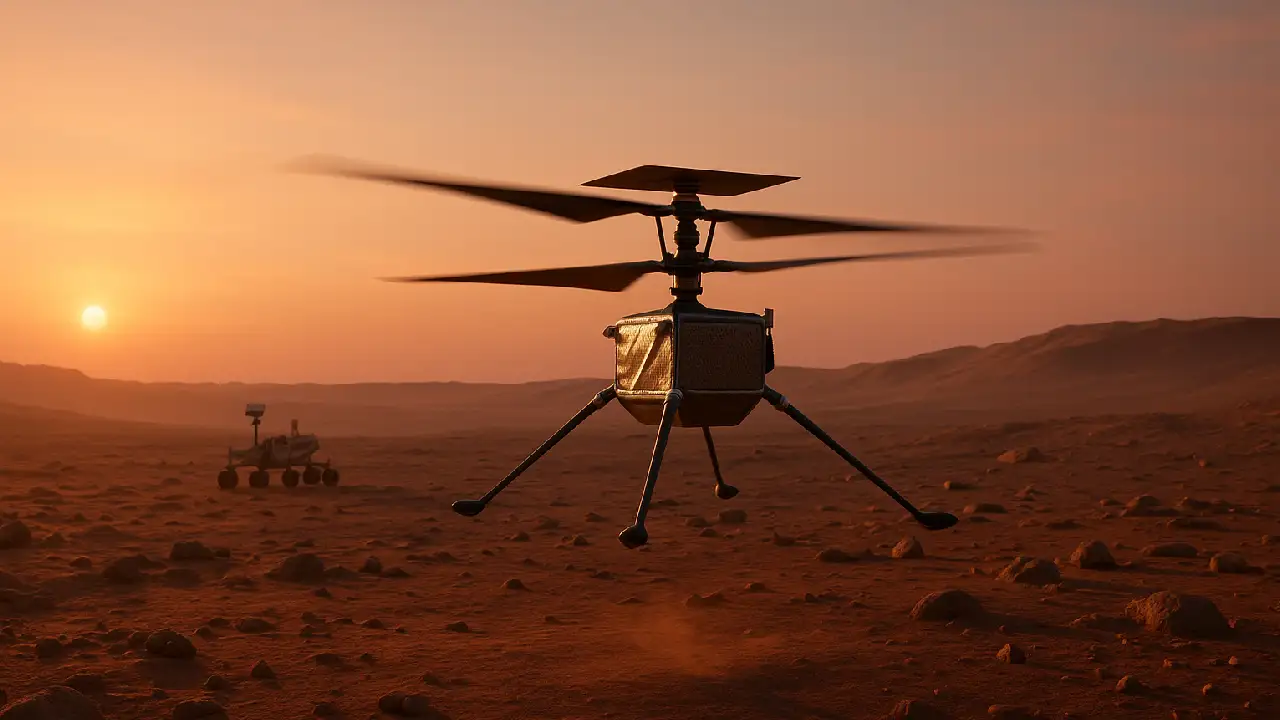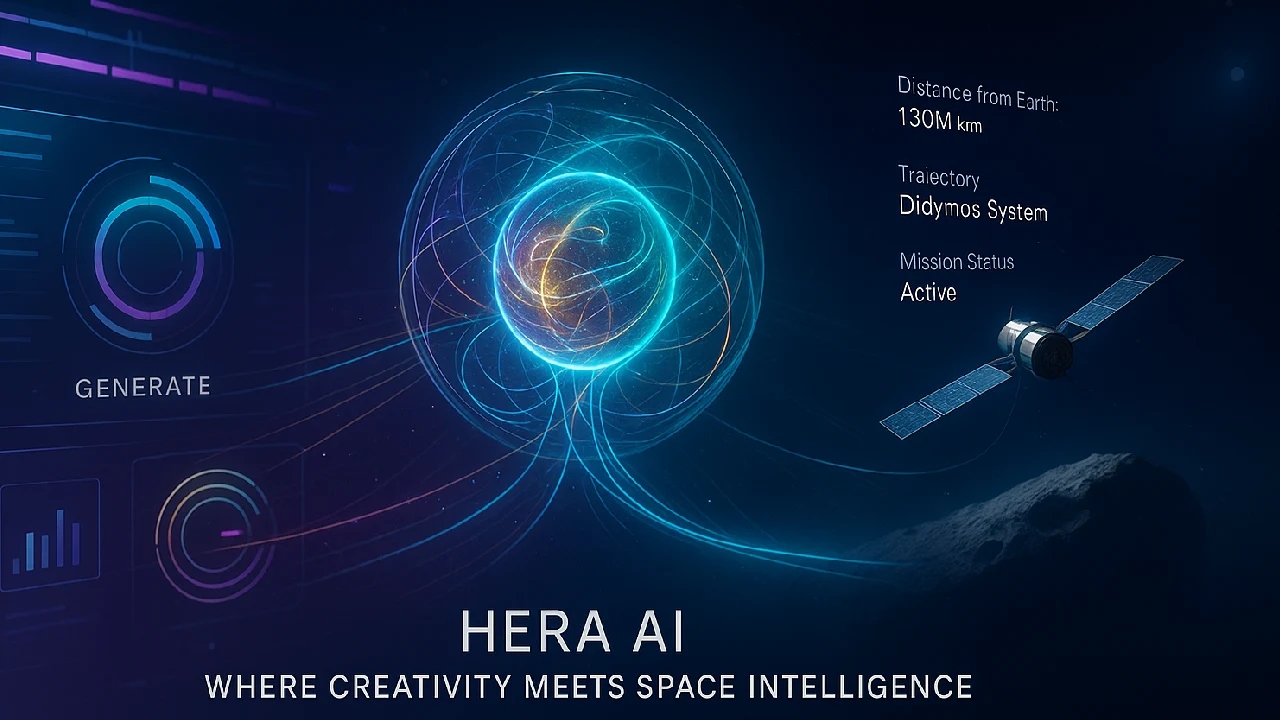The Mars helicopter is no longer just a fantasy. NASA’s Ingenuity rotorcraft soared over the surface of Mars and opened up a new age of aerial scouting, making it a proven instrument for space exploration.

For years, our missions to Mars mainly used rovers and orbiters. But Ingenuity proved what a drone can do in the thin, frigid air of Mars, and that success is driving the next generation of Mars helicopters.
Let’s look at how this ambitious mission to Mars by air began and where it’s going.
What is Ingenuity Mars helicopter and why it matters
Ingenuity was a small experimental rotorcraft that NASA dispatched with its Perseverance rover. In April 2021, it made history by being the first powered flight on another planet.
It was light, only 19 inches tall, and ran on solar power, but it had a lot of technology to help it survive Martian nights and fly in very thin air.
The goal was simple: fly five times and show that powered flight is possible on Mars.
“Ingenuity exceeded every expectation becoming not just a demo but a critical scout for the rover covering more ground than ever imagined”
— NASA JPL team member
How the Mars helicopter worked in harsh conditions
It’s easy to fly a drone on Earth, but the air on Mars is less than 1% as dense as Earth’s atmosphere.
So, how did Ingenuity do it?
Here’s what made the flight possible
- Light frame to reduce weight
- Fast-spinning carbon fiber rotors reaching 2400 rpm
- Solar panel and battery system to survive cold nights
- Autonomous software since there is no live joystick control

There was no room for corrections in the air; each flight had to be pre-programmed.
It still flew 72 times and spent about 100 minutes in the air.
Real world use cases Ingenuity enabled
The success of the Mars drone gave rise to serious thinking about aerial exploration in future missions.
Here’s what it unlocked.
- Rover route scouting finding smoother paths for Perseverance
- Hazard identification from a bird’s eye view
- Terrain mapping for future landers
- Science site previews before sending ground assets
In short, it became the robotic explorers’ “eye in the sky.”
What’s next after Ingenuity final flight
The last flight of Ingenuity took place in January 2024. It ended because a rotor blade broke, but not before showing that rotorcraft may be part of any Mars mission strategy.
NASA is now working on new Mars rotorcraft systems such
- Mars sample recovery helicopter to assist in future pickup missions
- Larger long-range drones capable of carrying scientific instruments
- Fleet-based aerial systems working in tandem with rovers
Lessons learned from Ingenuity are also helping to shape Dragonfly, a nuclear-powered rotorcraft mission to Titan, Saturn’s moon.
Visual metaphor imagines Earth without drones
Think about how drone technology changed filmmaking, delivering goods, responding to disasters, and farming.
Now think about using the same revolution on another planet.
That is what Ingenuity did: it gave Mars a pair of flying eyes.
Pros and cons of Mars rotorcraft exploration
Pros
- Faster coverage of terrain than rovers
- Access to cliffs craters and risky areas
- Adds flexibility to mission planning
- Low cost once proven tech is reused
Cons
- Limited payload capacity
- Power challenges during dust storms
- Fragility due to thin atmosphere
Still the benefits clearly outweigh the drawbacks
Conclusion
Helicopter on Mars Ingenuity transformed how we think about exploring space. It wasn’t simply a test flight; it was a big step forward in technology that showed how drones can scout rovers, defend missions, and investigate locations that are hard to get to.
Mars aviation is here to stay as NASA looks ahead with plans for new rotorcraft and ideas for recovering samples.
Would you fly a drone like Ingenuity over the skies of Mars? Please tell us







